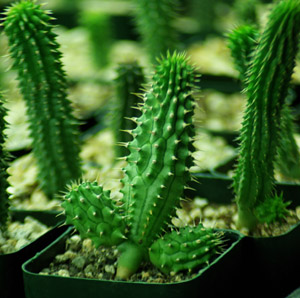Plants ordered now will ship Spring 2026 🙂
Black Cohosh (Cimicifuga racemosa) potted plant, organic
Price range: $10.50 through $27.50
Family: Crowfoot (Ranunculaceae)
Hardy to zones 4 to 10
(The Latin name Cimicifuga racemosa is synonymous with the Latin name Actaea racemosa)
Herbaceous perennial native to the forest understory of the eastern hardwood forests, especially northern Appalachia, with the gene center occurring probably in the mountains of West Virginia. Perfectly cold hardy and an excellent garden introduction which has actually been absorbed into the horticulture trade in Europe as an exotic ornamental. The plant prefers part shade and moist, rich soils. A good top dressing with organic compost and a finish with forest-derived mulch will produce monumental plants with multiple upright, white-flowering racemes.
Potted plant, Certified Organically Grown








Question
Ian Maas –
Hi Richo, I have a question about cohosh species. Local herbalists seem equally confused. I have several species growing. A green species with a sort of unpleasant smell that flowers mid summer. It has aggressive roots and seems to get everywhere. I also have another green species that flowers late summer, has a more pleasant smelling flower (if a little musky). A much more tidy plant with a clumping habit. And then of course there are the purples! Maybe from crosses with Asian species?
Anyway, Dan Hinkley calls it “…hopelessly muddled genus”.
Gray’s Manual of Botany refers to 3 species. C. Americana (summer cohosh). C racemosa ( black cohosh) and C. Cordifolia (gray). Which is the most commonly (or best) used medicinal species? Your book references the racemosa. I have seen references to categorization based on seeds produced per flower?
Care to weigh in on this? I’d love to hear what you know.
Thanks
Upvote if this was helpful (2) Downvote if this was not helpful (0) Watch Unwatch Flag for removal
Richo Cech –
hello ian. nice to hear from you. I do think that the reassignment of Cimicifuga to Actaea was a mistake and caused additional confoundment. After all, Black Cohosh (Cimicifuga racemosa) holds its seeds in a follicle, while baneberries (Actaea rubra, pachypoda, etc.) make drupes. Therefore I have refused to go with Acteae racemosa and continue on using the traditional genus adage, which does limit confusion. Your real black cohosh does not have invasive roots. It is clumping, makes a white flower that smells a bit carrion-like, resulting in a tall raceme of follicles. Flowering time is going to differ depending on location–Our’s are barely starting to make seedpods right now. Frankly a bit surprised that local herbalists would be confused on this–baneberry is pretty obviously not black cohosh, unless you’re out in the woods digging dormant roots, which at this point in history is frowned upon. Pages 24 to 25 of my book “Growing At-Risk” delves deeper into the Cimicifuga/Baneberry befuddlement. Richo
Upvote if this was helpful (2) Downvote if this was not helpful (0) Flag for removal
celeste –
hi! greatly appreciate to see this conversation. I am also confused by the purple varieties that I am seeing with the name cimicifuga racemosa. I smelled a bloom last week at work that was not like carrion. my plants are green leafed at home. I wonder if a purple leaf has been encouraged so that they are more attractive in a landscape? thanks for being interested!
Upvote if this was helpful (1) Downvote if this was not helpful (0) Flag for removal
Richo Cech –
Hi Celeste, yes, there are selections e.g. “purple torch.” These are indeed pretty on the landscape and your observance that the flower smells differently is indicative of the fact that the chemistry has been altered from its trustable wild state. nice to look at but not. . . medicine. richo
Upvote if this was helpful (1) Downvote if this was not helpful (0) Flag for removal